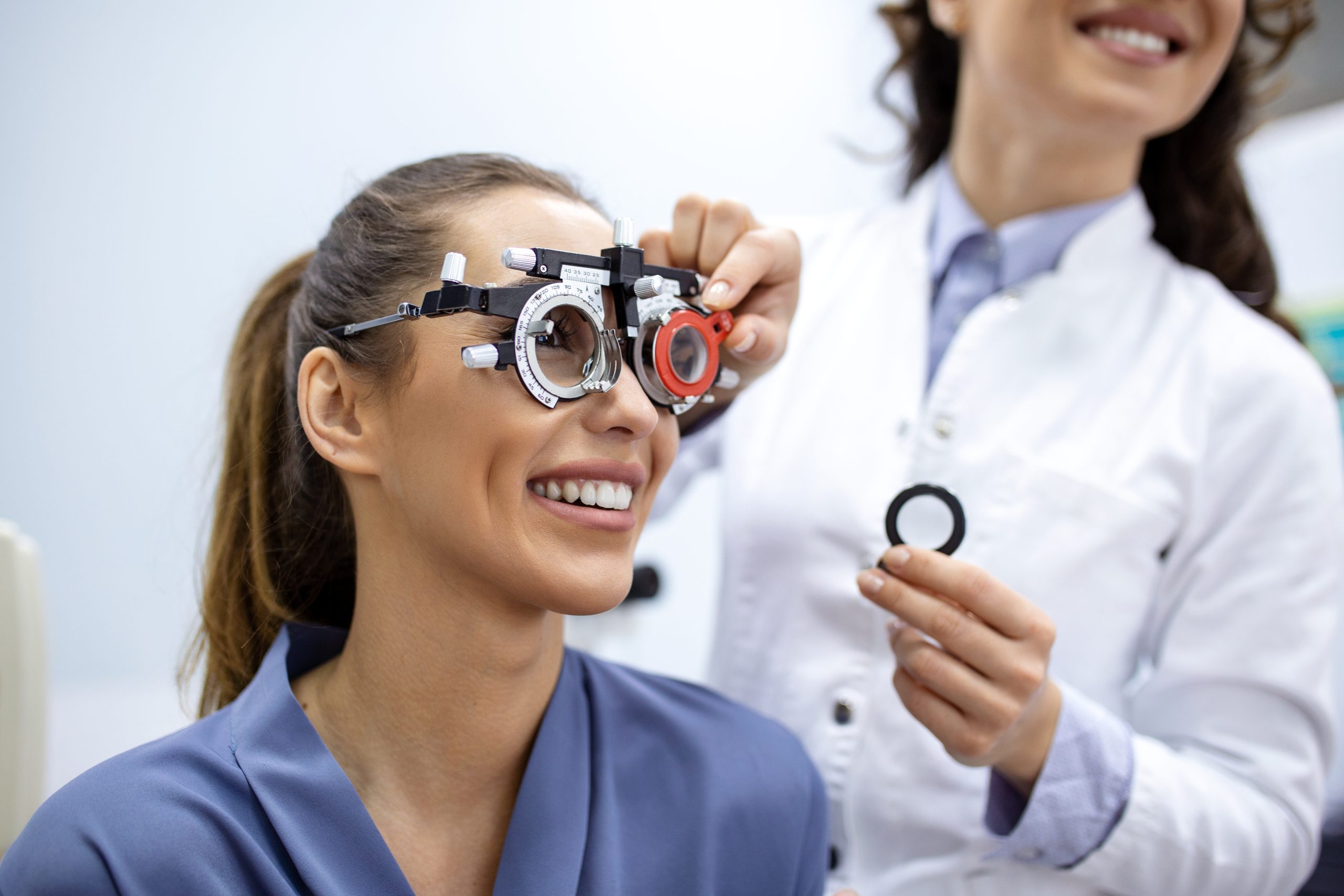Why Selecting an Eye Doctor Optometrist is Important for Your Eyes
Discovering the current Technical Innovations in Optometry and What They Mean for Eye Doctors
From the accuracy of Optical Comprehensibility Tomography to the nuanced understandings used by AI-driven diagnostic tools, these developments are establishing brand-new criteria in individual analysis and treatment. As these improvements penetrate the technique, optometrists are faced with the obstacle of accepting these tools to improve client results.
Developments in Diagnostic Equipment
Progressing the area of optometry, innovations in diagnostic devices have actually transformed the method eye care experts evaluate and detect visual disabilities and eye problems. The past decade has actually observed considerable technical advancements, enabling more accurate and extensive analyses.
An additional key innovation is the intro of advanced corneal topography systems, which map the surface curvature of the cornea with accuracy. These devices are particularly helpful for fitting get in touch with lenses and detecting corneal problems. Additionally, electronic retinal imaging has actually changed traditional ophthalmoscopy, using thorough, breathtaking views of the retina that assist in thorough visual exams.
The development of wavefront aberrometry has also been important, allowing the evaluation of refractive mistakes with unequaled precision (Eye Doctor Optometrist). This technology assists in customizing corrective lenses and enhancing surgical outcomes for refractive surgeries. Collectively, these diagnostic improvements encourage eye doctors to supply premium patient care, ensuring early intervention and customized therapy strategies, inevitably boosting aesthetic health and wellness results
AI in Individual Administration
Building on the structure of advanced analysis tools, the consolidation of artificial knowledge (AI) in patient monitoring represents a transformative jump for optometry. AI systems are increasingly utilized to enhance performance, accuracy, and customization in individual care.
In addition, AI-driven systems help with structured client communications and management processes. Automated organizing, virtual appointments, and personalized follow-up strategies not only enhance patient satisfaction however also enhance time management for professionals. These systems can triage patients based upon the urgency of their problems, ensuring that those in vital demand receive punctual focus.
Additionally, AI boosts decision-making by giving eye doctors with evidence-based recommendations and therapy pathways. By integrating information from electronic wellness documents, AI tools provide understandings that inform scientific choices, minimizing the risk of errors and enhancing person end results. As AI remains to evolve, its duty in individual monitoring will likely expand, reshaping the landscape of optometric care.
Breakthroughs in Retinal Imaging
In the world of optometry, retinal imaging has actually observed remarkable technical innovations that are enhancing diagnostic capabilities and individual treatment. Advancements such as Optical Coherence Tomography (OCT) and fundus digital photography have revolutionized just how optometrists evaluate the retina and envision.
Enhanced imaging techniques like OCT angiography are more refining diagnostic precision. Optometrist Chino. Such improvements facilitate the identification of min retinal adjustments that could symbolize condition development.
Additionally, innovations in synthetic knowledge are augmenting retinal imaging by allowing automatic evaluation of huge datasets. These systems help optometrists in determining patterns a measure of pathology, therefore enhancing diagnostic accuracy and efficiency. Collectively, these advancements are changing retinal imaging right into a keystone of modern eye care, improving outcomes and expanding therapeutic possibilities.
Teleoptometry's Growing Role
Teleoptometry is significantly coming to be a crucial element of More Bonuses eye care, driven by innovations in electronic interaction and analysis devices. This is especially useful in underserved and rural areas where access to specialized eye treatment is typically limited.
The integration of fabricated intelligence (AI) more improves teleoptometry, enabling the evaluation of visual data and assisting in the detection of eye conditions such as glaucoma and diabetic person retinopathy. AI-powered algorithms can swiftly analyze complex imaging information, offering eye doctors with valuable understandings that reinforce professional decision-making.
Additionally, teleoptometry supports connection of care with smooth assimilation with electronic wellness records (EHRs), enabling optometrists to preserve comprehensive individual backgrounds. When seeking advice from with different specialists., this makes certain that clients get individualized and regular care even.
In spite of these benefits, obstacles continue to be, consisting of making sure information security and handling person assumptions. Teleoptometry represents a considerable stride in the direction of even more easily accessible, reliable, and patient-centered eye treatment. As modern technology evolves, its role is poised to expand even more.

Future Patterns in Eye Care
A myriad of ingenious patterns is set to reshape the future of eye care, driven by technological advancements and the evolving demands of people. One substantial fad is the combination of man-made intelligence (AI) in diagnostics, which promises to boost the accuracy and effectiveness of eye evaluations. AI algorithms can assess substantial quantities of data from retinal images, possibly finding problems like diabetic retinopathy and glaucoma over here earlier than standard approaches.
In addition, tailored medication is gaining grip in optometry, with genetic screening notifying Read Full Report customized therapy plans. This technique aims to optimize individual end results by tailoring treatments to private genetic profiles. Wearable modern technology, such as wise contact lenses, is additionally on the horizon, offering real-time surveillance of intraocular pressure or sugar levels, hence offering continual insights right into eye and systemic health and wellness.
The adoption of augmented truth (AR) and digital reality (VIRTUAL REALITY) in training and client education and learning is another arising trend. These modern technologies provide immersive experiences that can boost understanding and skills both for individuals and eye doctors. As these trends progress, eye doctors should remain abreast of technological innovations to provide cutting-edge care, making sure better client results and satisfaction in the dynamic landscape of eye care.
Verdict

Jointly, these diagnostic improvements empower eye doctors to provide remarkable patient care, making certain very early intervention and tailored treatment strategies, inevitably improving visual health results.

As these technologies proceed to advance, optometrists should adjust and include them into practice, eventually maximizing operations efficiency and raising the requirement of eye treatment supplied to people.